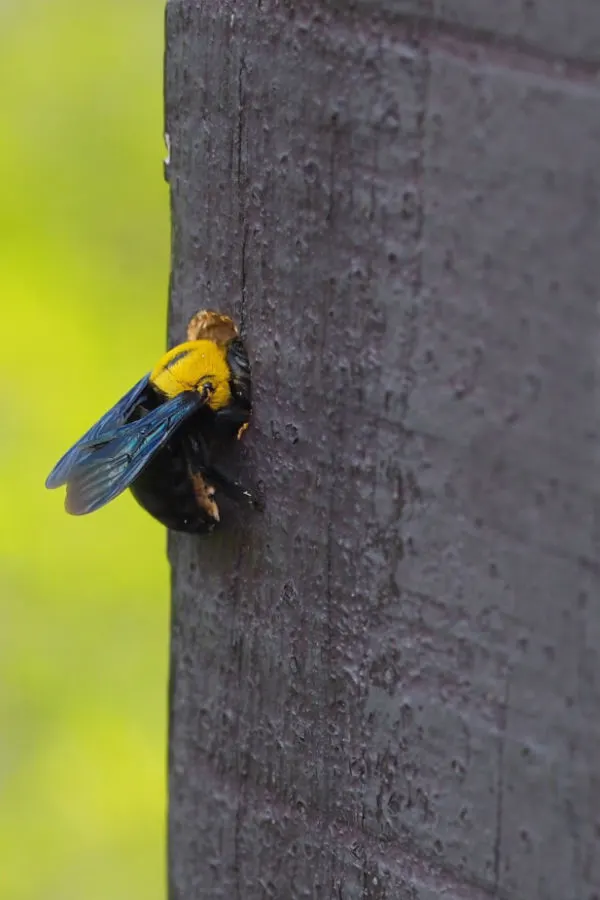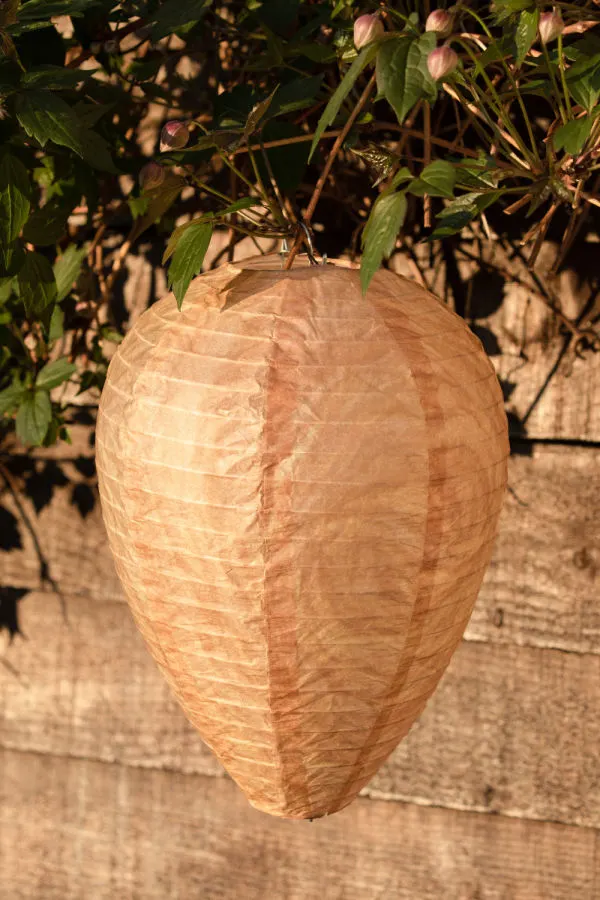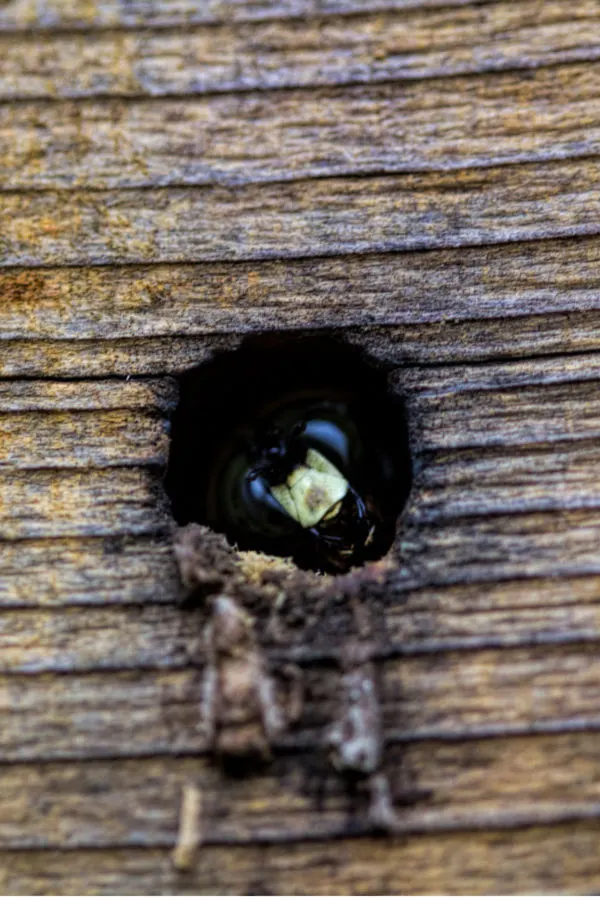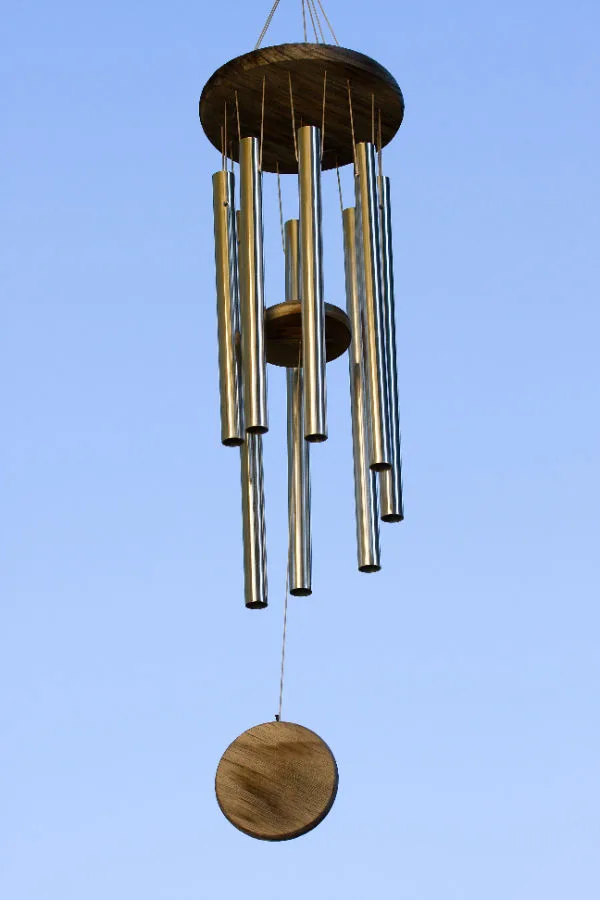Ad Blocker Detected
Our website is made possible by displaying online advertisements to our visitors. Please consider supporting us by disabling your ad blocker.
As spring rolls around, so do the carpenter bees, ready to wreak havoc on anything made of wood. They’re notorious for drilling holes into homes, barns, sheds, fences—you name it. Once they’ve found a nice spot, they can turn your wooden surfaces into something resembling Swiss cheese in no time!
So, how can you deal with these buzzing troublemakers? Well, first off, let’s distinguish them from their bumblebee cousins. Carpenter bees might look similar, but they’re smoother—they lack the fuzziness of bumblebees. Plus, unlike bumblebees, they don’t pack a sting.
Now, let’s talk prevention tactics.

It’s the third difference between the two that becomes a headache for homeowners. You see, bumblebees set up their nests and colonies in the ground, which is manageable. But carpenter bees? They’re solitary creatures, and guess where they make their homes? Yep, you guessed it—right in the wood itself! And that’s where the real trouble begins.
Spotting The Damage
Contrary to common belief, carpenter bees aren’t feasting on the wood itself. Instead, they meticulously drill those near-perfect holes to provide a cozy spot for the female bees to lay their eggs and nurture the next generation of carpenter bees.
If you notice sawdust scattered around or underneath a wooden surface, chances are it’s the handiwork of these carpenter bees. And if you take a closer look, you’ll probably spot a meticulously drilled hole nearby. It’s so precise that you might even mistake it for the work of someone with a drill and a steady hand attacking your home!
Similar to honeybee colonies, it’s the female carpenter bees that carry out the bulk of the family duties. This includes laying eggs, caring for the young, and of course, drilling out those nesting holes.
Now, what about the male carpenter bees? Well, if you’ve ever been around an area buzzing with carpenter bee activity, you’ve likely encountered the males more often than the females.
4 Simple Secrets To Keep Carpenter Bees Away
Now that we’ve discussed why carpenter bees are drawn to wood and how they go about making their homes there, let’s talk about how to deter them.
Using insecticides to kill them might seem like a quick fix, but it’s not the best solution. For one, carpenter bees are crucial pollinators, so wiping them out with chemicals also harms essential pollination efforts. Plus, indiscriminate spraying can also harm other beneficial insects.
But here’s the good news: you don’t have to resort to killing them to safeguard your wooden structures. Four simple and natural methods work wonders in keeping carpenter bees away from the wood surfaces you’re trying to protect.
#1 Staining / Painting
The golden rule for effectively deterring carpenter bees is to never leave wood surfaces untreated. These insects have a strong preference for untreated and unstained wood above all else. So, the first step in defense is to give your wooden surfaces a fresh coat of paint or stain.
In our experience, the stain has proven to be particularly effective. However, glossy paint can also do the trick with its repellent properties. If you prefer to maintain the natural look of the wood, applying a high-quality clear sealer can help seal it and make it less appealing to carpenter bees.
Before you start painting or staining, it’s crucial to address any existing carpenter bee holes. These insects have an impressive memory and will keep returning to the same spot. By sealing off these holes, you remove an easy access point for them.
But before you plug the hole with an exterior wood filler, make sure to clear it of any larvae that might be inside. If left unchecked, these larvae can still hatch and attract woodpeckers. And trust me, if woodpeckers start targeting the wood around your home, you’ll be dealing with a whole new level of damage!
2) Using Fake Wasp Nests, Noise & Vibration

When it comes to old-fashioned tricks for repelling carpenter bees, there are a couple of reliable methods that can work wonders. One highly effective strategy is to strategically place a few “fake” paper wasp nests in areas where the bees are active. Wasps are natural predators of carpenter bees and are known to prey on their larvae. When carpenter bees spot a wasp nest nearby, they’ll quickly retreat to another location.
You have a couple of options for creating these fake nests. You can either purchase them or make your version by placing a balloon inside a paper bag. Simply hang these fake wasp nests in areas where you need protection, and watch as the carpenter bees steer clear of the area.
Affiliate Product Link : Wasp Nest Decoy – 3 Pack- Eco Friendly Hanging Wasp Repellent
Using noise and vibration as a deterrent is another effective method for discouraging carpenter bees from drilling and nesting in a particular area. The combination of loud noises and vibrations can startle them and disrupt their ability to work and construct their nests effectively.
One practical way to introduce both noise and vibration is by installing wind chimes. The constant movement and rattling of the chimes can make the bees think twice about settling in that area. For added effectiveness, you can even combine this method with the placement of fake wasp nests to amplify its impact.
It’s worth noting, however, that electronic pest-repellent devices don’t fare well in deterring carpenter bees. The noise emitted by these devices doesn’t bother the bees much, so they’re unlikely to be deterred from nesting by them.
#3 Almond, Citrus, Or Peppermint Oil
Like many other insects, carpenter bees have an aversion to certain smells, including almond oil, citrus oil, and peppermint oil. This makes these oils excellent natural repellents for deterring carpenter bees and protecting wooden structures.
Simply spraying any of these oils into newly drilled holes can often halt the bees’ efforts. Additionally, wiping down high-traffic areas with these oils is an effective preventative measure to stop them from drilling in the first place.
However, it’s important to exercise caution when using oils. Always perform a small patch test first to ensure that the oil won’t cause discoloration or damage to the surface you’re trying to protect. Furthermore, you’ll need to reapply the oil regularly, especially if the area gets exposed to rain, to maintain its effectiveness.
Affiliate Link : Baja Precious – Sweet Almond Oil, 1 Gallon



